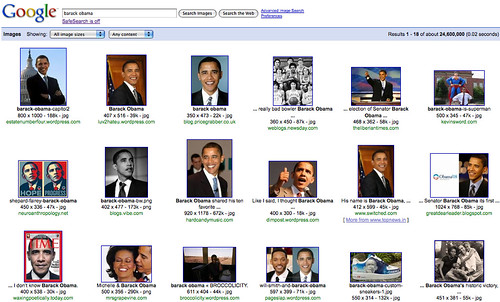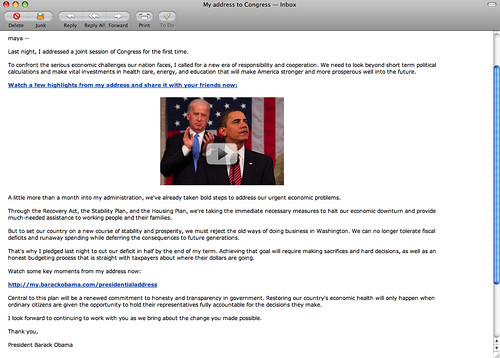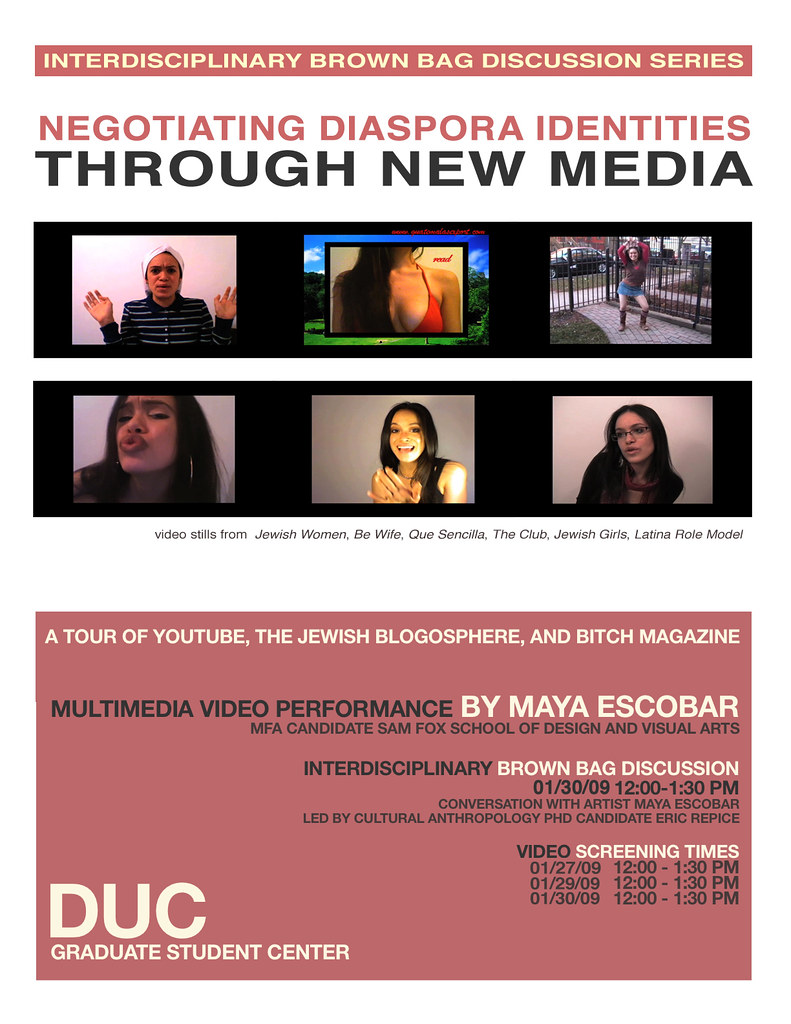from click for full article in artforum

[youtube=http://www.youtube.com/watch?v=Zd8f9Zqap6U]
The man who had just won the globe’s most visible job dominated America’s attention. President-elect Barack Obama: intelligent, witty, knowledgeable, eloquent, telegenic, photogenic, aurally pleasing. Gone, the faulty neologisms of the past eight years. Gone, the irrationality of God-directed foreign policy. Gone, the ramblings and the wacky syntax.Obama’s timely intervention into the abyss began on November 15, just eleven days after the election, when he streamed on YouTube from his website. The video opened on a modified version of the presidential seal, zooming out to reveal the words CHANGE.GOV (his website’s handle), and underneath, THE OFFICE OF THE PRESIDENT-ELECT. Then it scrolled down to the approximated presidential seal again, with these words beneath: YOUR WEEKLY ADDRESS FROM THE PRESIDENT-ELECT. NOVEMBER 15TH, 2008.This “weekly” address was in fact Obama’s very first, but enjoining “weekly” creates a faux continuity: Past activities fuse with future ones. And by issuing the podcast as the president-elect, Obama created a new, unprecedented, even extraconstitutional, national office. Still, his screen presence felt familiar, comforting. He played a role that corresponds to ones Americans have long watched on TV—from Robert Young in Father Knows Best to Sam Waterston in Law & Order (or, even more apt, Waterston in his TV ads for TD Ameritrade). The role requires unflappability, which Obama exudes like Verbena cologne, and it is his aim, in this video, to quiet America’s erratic pulse, its arrhythmic financial markets, its frightened workers, its bankrupt home owners.The president-elect is seated behind a desk on a black leather chair, his head cushioned against its back. He’s in medium shot and part of a cozy composition; nothing seems out of place. He almost appears tucked into the image, which divides into discrete elements. On the left, an American flag hangs the length of the frame, the one and only element taller than he. The background is a medium-brown wood-paneled wall. To the left of Obama, shoulder-high, three dark-blue volumes: Public Papers of the Presidents: John F. Kennedy (1961–1963). The tomes lend a somberness to the image, representing the popular, fallen president, while associating JFK’s New Frontier with Obama’s upcoming variation on the New Deal. On the far right, also shoulder height, another volume, its title blurred, and a basketball, like a Pop art sculpture, signed by Lenny Wilkens of the US Olympic basketball team. A plant’s green leaves drape over the ball.Though it’s video, it’s basically a still image. Obama wears a dark red tie and a flag pin on his gray lapel. His head moves up and down gently, for emphasis, and occasionally it subtly shifts from side to side. His expression is serious, sober, nearly unchanging, and the new gray at his temples does no harm. The sonorous Obama voice stays steady, on course, with none of the rise and fall heard in his campaign speeches, but he doesn’t shy away from unsettling language, like “the greatest economic challenge of our times.” Still, he’s not running anymore, so he’s transmuted his stump speech into a Fireside Chat, in which the screen is the hearth and his voice the melody in the air. “I know that we can steer ourselves out of this crisis. . . . I am more hopeful than ever that America will rise once again.” He has checked his radiant smile, since these are not happy times, but he reassures the American public that happy days are here to come.From this initial video message to his preinauguration press conferences to more recent YouTube clips and weekly talks, Obama has transformed the function of the president-elect, just as he transfigured the presidential campaign into an Internet phenomenon. Streaming from the Office of the President-Elect, a nonplace or anyplace, Obama proclaims his virtual presidency. The easy acceptance by the public and the media of this novel authority—after some initial “Where’s the president?” “Nowhere”—attests to the way people live today, in online encounters and communities. They connect as if they were face-to-face.Barack Obama keeps making history. He has now also affected the English language, specifically the word virtual. Through his prestidigitations, he has helped along a linguistic shift: Virtual is the new actual. And, in that sense, Obama is president, news maker, and commentator. He can explain himself, by himself. Since he knows what he’s thinking—and why—before the mediacs do, he scoops them effortlessly. In comparison with his skills, their responses seem increasingly thin, redundant, more obviously ill-informed, and excruciatingly superficial. Obama’s capacity to think and answer might force the “cult of personality” pundits to stop shouting and start reading. Actually, virtually.Lynne Tillman is a novelist.
 Recently in the news is the preemptive lawsuit artist Shepard Fairey filed against the Associated Press. According to Fairey the AP threatened to sue him unless he pays royalties for the image that he used as source material for his now famous campaign poster of Barack Obama. Fairey argues that he is protected by the fair use principle. He claims that his intention was not to reproduce any particular image, but instead was to capture a specific gaze representative of the ideas of hope and change.In an interview on NPR, Fairey declared he was going forward with this suit on behalf of all artists, the thousands of artists that created their own campaign images in the same grassroots manner, pulling images from the web in support of the message of hope, change and a new administration in Washington.
Recently in the news is the preemptive lawsuit artist Shepard Fairey filed against the Associated Press. According to Fairey the AP threatened to sue him unless he pays royalties for the image that he used as source material for his now famous campaign poster of Barack Obama. Fairey argues that he is protected by the fair use principle. He claims that his intention was not to reproduce any particular image, but instead was to capture a specific gaze representative of the ideas of hope and change.In an interview on NPR, Fairey declared he was going forward with this suit on behalf of all artists, the thousands of artists that created their own campaign images in the same grassroots manner, pulling images from the web in support of the message of hope, change and a new administration in Washington.




